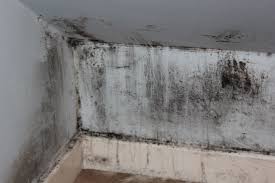Dec
2018
How to Deal with Common Household Mould and Mildew
by Matthew Wilkinson | no comments | Uncategorised
It is a common phenomenon in most accommodation that the appearance of Black Mould or Mildew will inevitably happen over time.
This can be a normal part of living and can quite easily be treated. However, this article will focus on the most common cause that Dendrow have experienced, being formation of condensation from daily living. There are some exceptional cases involving rising damp and water leaks, however, these will be covered in another article.
The Science
Moulds and Mildew are fungi. They are neither plant nor animal, but have their own kingdom (since 1969) which includes such marvels as Penicillin, yeast for making bread and in wine fermentation.
Most common fungi are ubiquitous within our environment and we are exposed to them constantly. It is very rare that diseases are caused by these common fungi and it is necessarily the inflammatory press reports that cause a hype around concerns.
Requirements for Mould Growth
There are four requirements being
- Mould Spores
- Mould Food
- Appropriate Temperatures
- Considerable Moisture
It does not help matters that Mould grows wonderfully in temperatures akin to human comfort and that moisture can build up in a home through many of life’s daily activities.
Activities such as:
- Showering or bathing
- Cooking
- Drying clothes on indoor clothes driers or tumble dryers which are not vented to the outside
These all increase the internal humidity within the home and can indeed aid the growth of spores and spread throughout.
These all cause a considerable amount of condensation in the home, even breathing causes a build up of moisture and the natural micro-organisms that are carried on the body can multiply in a home.
Determining if you have Mould
There are many different identifiers in the home for characterisation of mould growth. However, in this instance the two most notable are the black that appears on bathroom grout, or the green-black mould on a bathroom ceiling. Indeed these can appear in a bedroom, kitchen, lounge or even in your fridge.
Tell-tale Signs
- Earthy or musty smell, like the forest floor
- Appearance of Dark or Black spots on ceiling, walls, grouting or mastic (main areas)
Case Study
Dendrow manage a garden flat property in a Victorian Mansions block, where Rising Damp was determined to be present. This resulted in Kenwood PLC being instructed to carry out damp proofing works throughout the whole property.
Tenants moved into the property once the work had been completed as advised and after 6 months the tenants started to report mould growth and they believed that it was rising damp.
Given that Kenwood PLC have a guarantee in place, Dendrow immediately instructed Kenwood to go and evaluate the situation.
The returned report conceded that the cause of the mould growth was condensation within the property and there was no evidence of rising damp.
Conclusion
The activities outlined above as causes of mould growth were indeed to blame for the instances experienced in this case study.
Eliminating Mould Growth
Preventative Measure
Some simple tips and tricks for preventing growth
- Regular cleaning with bleach containing products
- Ventilation of the property by ensuring that the extractor fans are left on and turned on whilst showering
- Ensuring the heating is on for a reasonable time to allow condensation to evaporate and escape the property through extractor vents.
- Extractor hood is used when cooking
- Ensure the property is ventilated when drying clothes and the heating is on.
- If a tumble dryer is present, ensure the vent exits the property
Eliminating mould when it first appears
From experience, the first action that must be taken when mould or mildew first appears on walls, ceilings, grouting or mastic is to immediately treat it with a bleach containing product, such as Flash with Bleach and leave overnight then wipe away with warm water in the morning.
This simple piece of advice can indeed alleviate mould or mildew caused by a build up condensation in the home.
Another common place for the formation of Mildew/Mould is in the bathroom and specifically on the bathroom ceiling. Ensuring the extractor fan is clean and free of any dust or blockages will ensure that it is as efficient as possible, whilst leaving the heating on in the bathroom will aid in the evaporation of the condensation and extraction through the vent.
If the build up of mould has passed the stage where a standard solution of bleach with water (i.e flash with bleach) is no longer sufficient, then a specialist product such as “HG Mould Spray” can be used. Again, this has only been used in bathrooms and in particular on the ceiling. Left overnight, the ceiling looks brand new.
Follow the instructions on the package carefully and do consult other sources of information
Overall the tips and tricks highlighted above will indeed aid in the prevention, elimination and alliveation of common household mould. Although not an exhaustive list of causes, it is indeed an avenue by which tenants can free themselves from the constraints of mildew buildup in the home.




